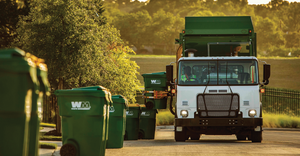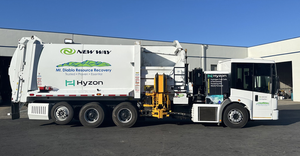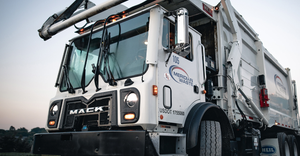Lead-Acid Batteries 3034
A BATTERY IS A DEVICE in which the energy of a chemical reaction can be converted into electricity. Small, sealed button and six-volt batteries are used for consumer products; “starting batteries” deliver a short burst of high power to start engines; “deep-cycle batteries” deliver a low, steady level of power for electrical accessories such as trolling motors on boats; and large industrial batteries have thicker plates and can supply low steady power for years. This profile is limited to lead-acid batteries used by motor vehicles.
A lead-acid battery consists of a polypropylene casing; lead terminals and positive and negative internal plates; lead oxide; electrolyte, a dilute solution of sulfuric acid and water; and plastic separators made of a porous synthetic material. More than 80 percent of the lead produced in America is used in lead-acid batteries.
Lead-acid batteries have the highest recycling rate of any product sold in the United States. This is because of the ease of returning a used battery when purchasing a new battery and the value of the lead and plastic components of the used battery.
Chaz Miller is state programs director for the National Solid Wastes Management Association, Washington, D.C. E-mail the author at: [email protected]
Lead-Acid Battery Municipal Solid Waste Facts:
Generated:
2.29 million tons or 1.0% by weight.*
15.75 pounds (lbs.) per person.*
The average life of a car battery is four years.
The average life of a truck battery is three years.
The amount of lead in a car battery is 21.4 lbs.
Recycled:
2.13 million tons or 93%.*
97% of battery lead is recycled (industry data).
Nine states have battery deposit laws.
Most states require retailers to collect old lead-acid batteries from customers who buy new batteries.
Recycled Content:
A typical battery has 60% to 80% recycled lead and plastic.
Composted:
Lead-acid batteries should never be placed in a composting pile.
Incinerated or Landfilled:
160,000 tons or 0.1% by weight.*
Should not be incinerated.
41 states ban disposal in Subtitle D landfills.
Landfill Volume:
Negligible.
Density
Average car battery weighs 39 lbs.
Average truck battery weighs 53 lbs.
Average motorcycle battery weighs 9.5 lbs.
Source-Reduction:
In 10 years, car battery cycles have increased from 2500 to 6000.
Industrial batteries can last 10 to 20 years.
Recycling Markets:
Polypropylene casings processed back into new battery casings.
Lead is recycled into lead plates and other battery parts.
Battery acid is either neutralized, treated and discharged into sewers or processed into sodium sulfate, a powder used in laundry detergent, glass and textile manufacturing.
Sources:
Battery Council International, www.batterycouncil.org
“Measurement Standards and Reporting Guidelines”, National Recycling Coalition, Washington, D.C., www.nrc-recycle.org
“Municipal Solid Waste Generation, Recycling and Disposal in the United States: Facts and Figures for 2003,” U.S. EPA, 2005, www.epa.gov/osw
Waste Age, “If They Ban It, Will It Go Away?” October 1993
*EPA estimates for 2003
About the Author
You May Also Like




